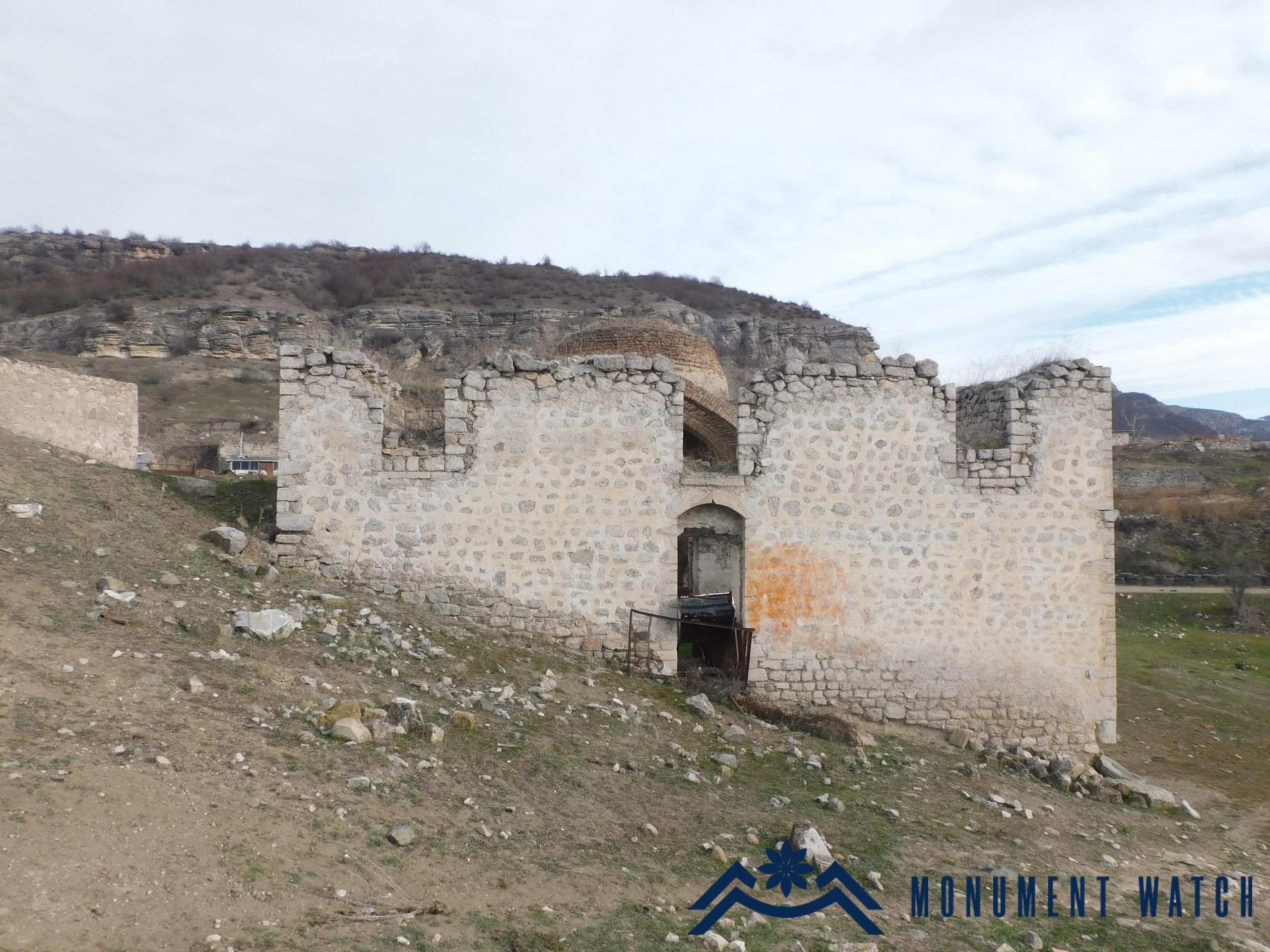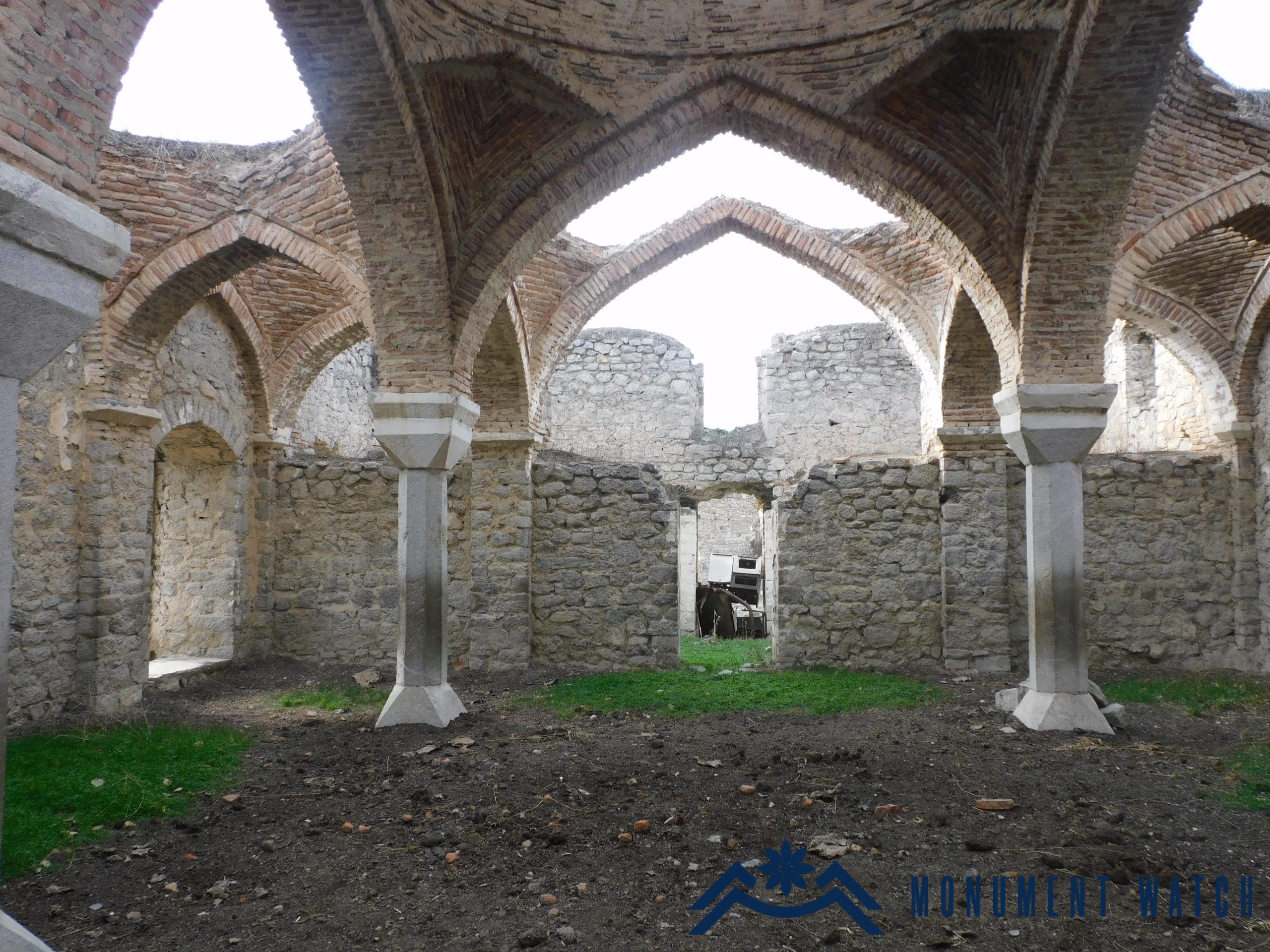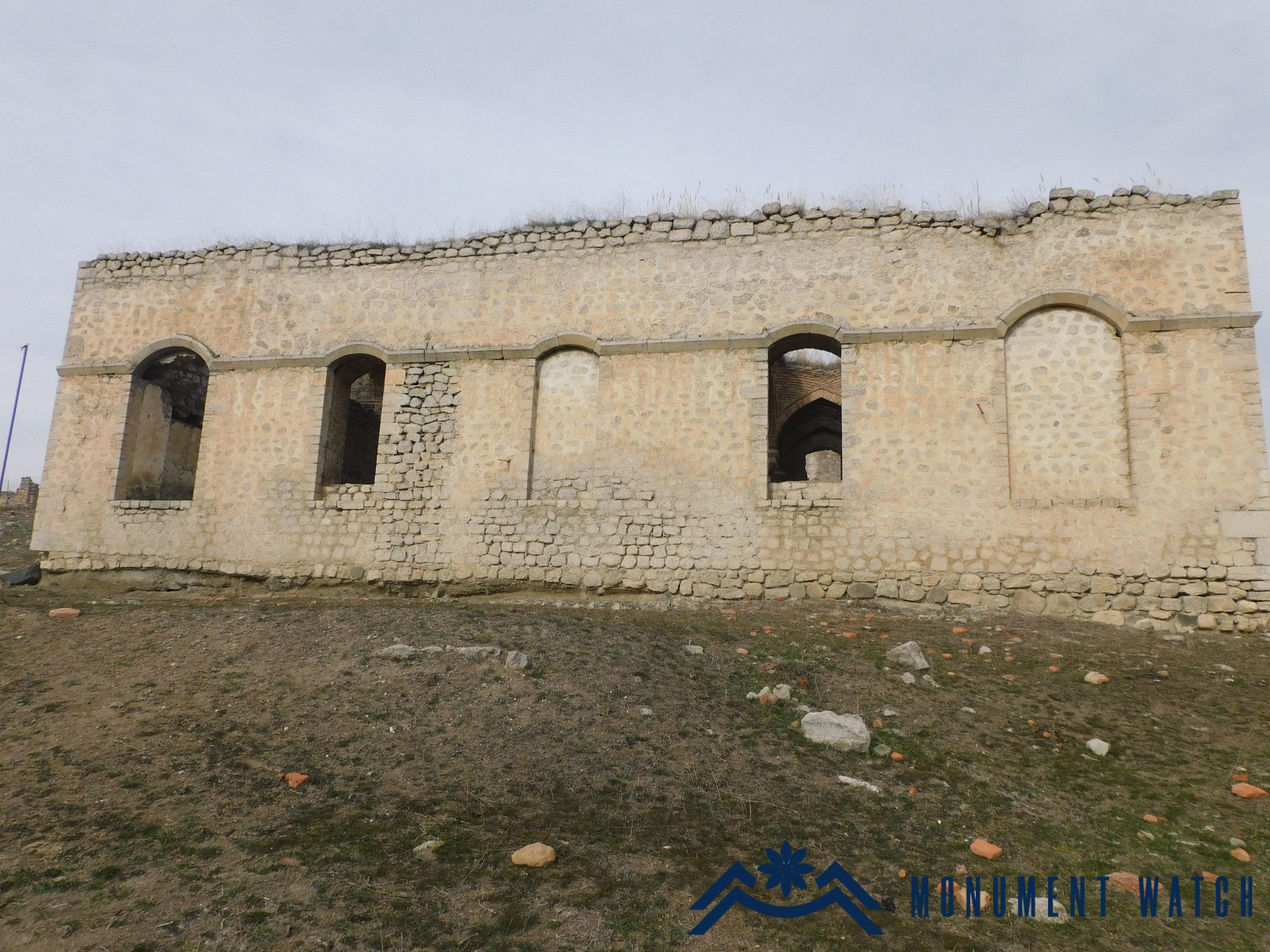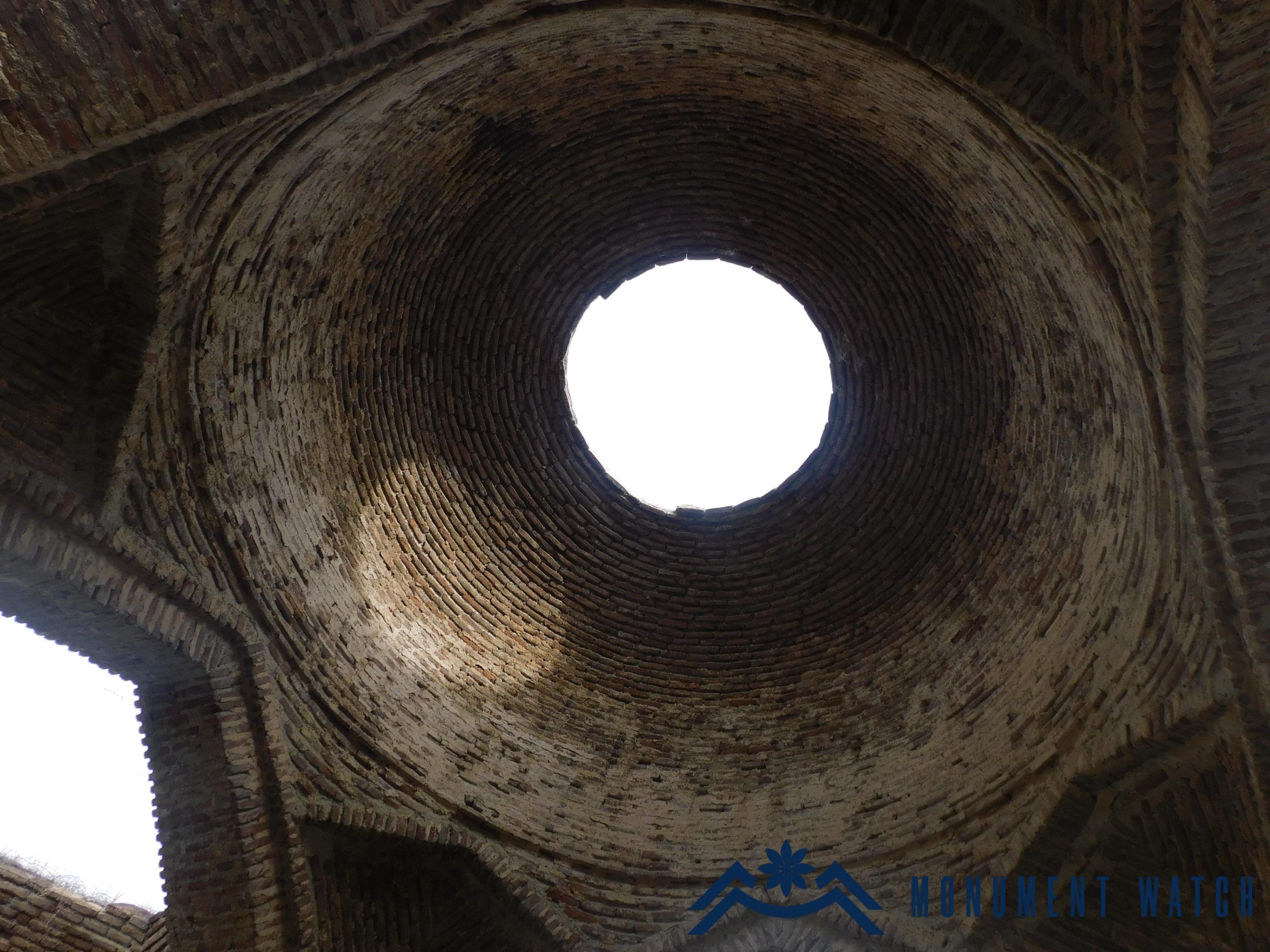The Mosque of Ajapnak
Location
The mosque building is located in the heart of Stepanakert's Ajapnyak district. The Ajapnyak district, according to the administrative division of the Soviet period, was an Azerbaijani village known as Malibeili (Malibeklu) that was part of the Shushi administrative region and was artificially enlarged during the Soviet years to create control over the city of Stepanakert.

Historical overview
We lack accurate historical information about the mosque. In the Azerbaijani domain, there are no clear and precise facts either.
Architectural-compositional examination
The mosque is a large rectangular building (Figs. 1, 2). It is divided into three sections: an entrance hall with three arches (Fig. 3), a central hall (Fig. 4), and a back hall (Fig. 5).
It is constructed of local white limestone, the walls are lined with plain and rough stones, and the outer walls are significantly smoothed by skillfully rendered lime plaster. The rough small stone walls were also plastered from the inside, and traces of this can still be seen. The mosque has large windows with stone frames and arches (Fig. 6). In general, the exterior of the building resembles Shushi city's construction art.
The mosque's main entrance is in the center of the three-arched hall in front of the building. Immediately above the latter, there are traces of an Arabic script written in red paint and framed. The writings are difficult to read as a result of poor preservation. It is assumed that there may be individual Qur’an expressions or an inscription of a constructive nature (Fig. 7). Two small doors to the right and left of the main entrance door lead to two small rooms (Fig. 8). Each room has a fireplace. The windows are two-row and large. Arched columns on both sides of the spacious hall support the entire weight of the roof. The brick arches and vaults are crowned with a brick dome in the center (Figs. 9, 10). The pillars are octagonal and made of polished stone, similar to the pillars of Shushi's Upper and Inner Mosques, Saatli Mosque, Aghdam, Fizulu, Horadiz, and Abdal Mosques. A three-nave interior space is formed by the columns. The mihrab is located inside the building, in the center of the southern wall (Fig. 11).
Overall, the mosque of Ajapnyak is very similar to the mosques built in Artsakh, particularly at the end of the nineteenth and beginning of the twentieth centuries. Many of these featured a three-arched front hall and a spacious pillared hall. With these characteristics, the mosques built on Artsakh territory are clearly influenced by Armenian gavits. The three-arched halls, in particular, have direct parallels in Artsakh's medieval Christian architecture (Metsaranitsi monastery, Koshik anapat, Yerits Mankants monastery). It is worth noting that the style of similar mosques developed and took shape in the city of Shushi, and the first and best examples can be found there. Kerbala Sefikhan of Karabakh built the most prominent mosques in this style, including the Upper and Inner Mosques of Shushi and the Aghdam Mosque.
It's not out of the question that this is also his project, or the builders simply followed the dimensional and spatial solutions of previously known structures. Based on these facts, we can conclude that the mosque was built at the end of the nineteenth century or, more likely, at the beginning of the twentieth.
The condition before and after the war
The building is intact, though the roof is damaged or collapsed in some places, there are cracks in the walls, and vegetation is noticeable on the top of the walls. There are also cracks in the back window.
Bibliography
Our information about the mosque is based on data presented in the monument certificate prepared by the Ministry of Education and Culture of the Artsakh Republic, and also our observations.
The Mosque of Ajapnak
Artsakh










